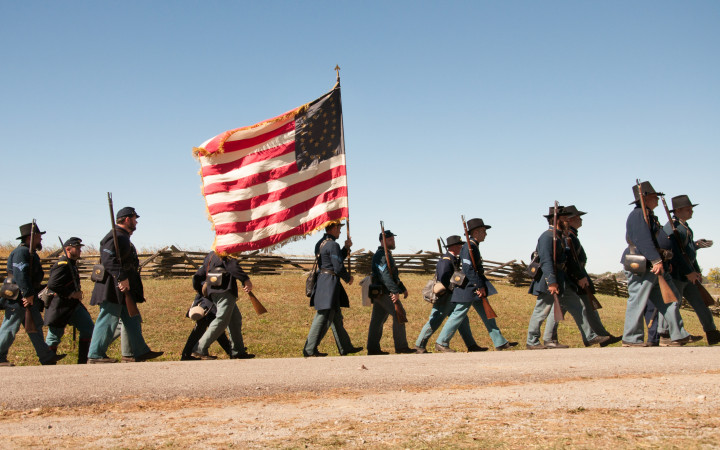Today’s Wonder of the Day was inspired by Avery. Avery Wonders, “I wonder what happend at Sherman's March” Thanks for WONDERing with us, Avery!
Can you name any famous military generals? Many Wonder Friends might think of Alexander the Great. You might even point to Napoleon Bonaparte. Today, we’ll learn about another well-known military leader. His name was William Tecumseh Sherman.
William Tecumseh Sherman was born in 1820 and grew up in Ohio. He later went to the U.S. Military Academy at West Point. After graduation, he served in the Army until 1853. Later, he worked as a banker, lawyer, and headmaster.
In 1861, Sherman was living in Louisiana and working at a military school. That same year, the state left the union to join the Confederacy. Sherman gave up his job and moved to St. Louis. He then re-enlisted in the Union Army as a colonel. He became a general in 1862.
Today, Sherman is largely remembered for his March to the Sea. This campaign started in Atlanta, Georgia, on November 17, 1864. It ended in Savannah, Georgia on December 21. On the march, Sherman’s soldiers burned or destroyed much of what lay in their path. After the surrender of Savannah, they turned to continue the march through South Carolina.
Why the destruction? It was part of Sherman’s strategy. He wanted to show people the power of the Union Army. He also wanted Confederate citizens to see that their government could not protect them. Additionally, the march left both citizens and Confederate soldiers without food or supply lines. His troops burned land used to grow crops and destroyed much of Georgia’s railroad system.
At the beginning of the march, the American Civil War had been going on for over three years. Sherman wanted to end the war with fewer casualties. Does this sound like a contradiction? At first glance, it may seem so. After all, the March to the Sea was one of the most destructive events of the war.
However, the March to the Sea was also largely bloodless. It lasted just over a month and saw 3,100 casualties. To compare, the three-day battle at Gettysburg ended with 51,000 soldiers killed and wounded. Sherman’s soldiers tried to harm property instead of people. This led to far fewer deaths than other campaigns.
Still, Sherman’s March to the Sea had a bigger impact than many of the war’s bloodiest battles. It lowered Southern morale and hurt the Confederate Army. Today, many experts say it helped to end the American Civil War. Indeed, Confederate General Robert E. Lee surrendered just a few months after Sherman’s March.
Of course, the march also left great loss in its wake. Many across the South called Sherman cruel and violent despite the low number of deaths. After all, his troops did destroy a lot of homes. They also burned farms, which were many people’s livelihood. It was a move toward total war—a method of battle that goes beyond military combat and targets everyday people.
Sherman wasn’t the first or last to do so. Total war would be a strategy used again during the world wars. What do you think of Sherman’s use of total war? Would you have done anything differently? What might history have been like without Sherman’s March to the Sea?
Standards: C3.D2.His.2, C3.D2.His.4, C3.D2.His.5, CCRA.L.3, CCRA.L.6, CCRA.R.1, CCRA.R.2, CCRA.R.4, CCRA.R.10, CCRA.SL.1, CCRA.SL.2, C3.D2.Geo.2, CCRA.W.2, CCRA.W.4, CCRA.W.7, CCRA.W.9, CCRA.L.1, CCRA.L.2




